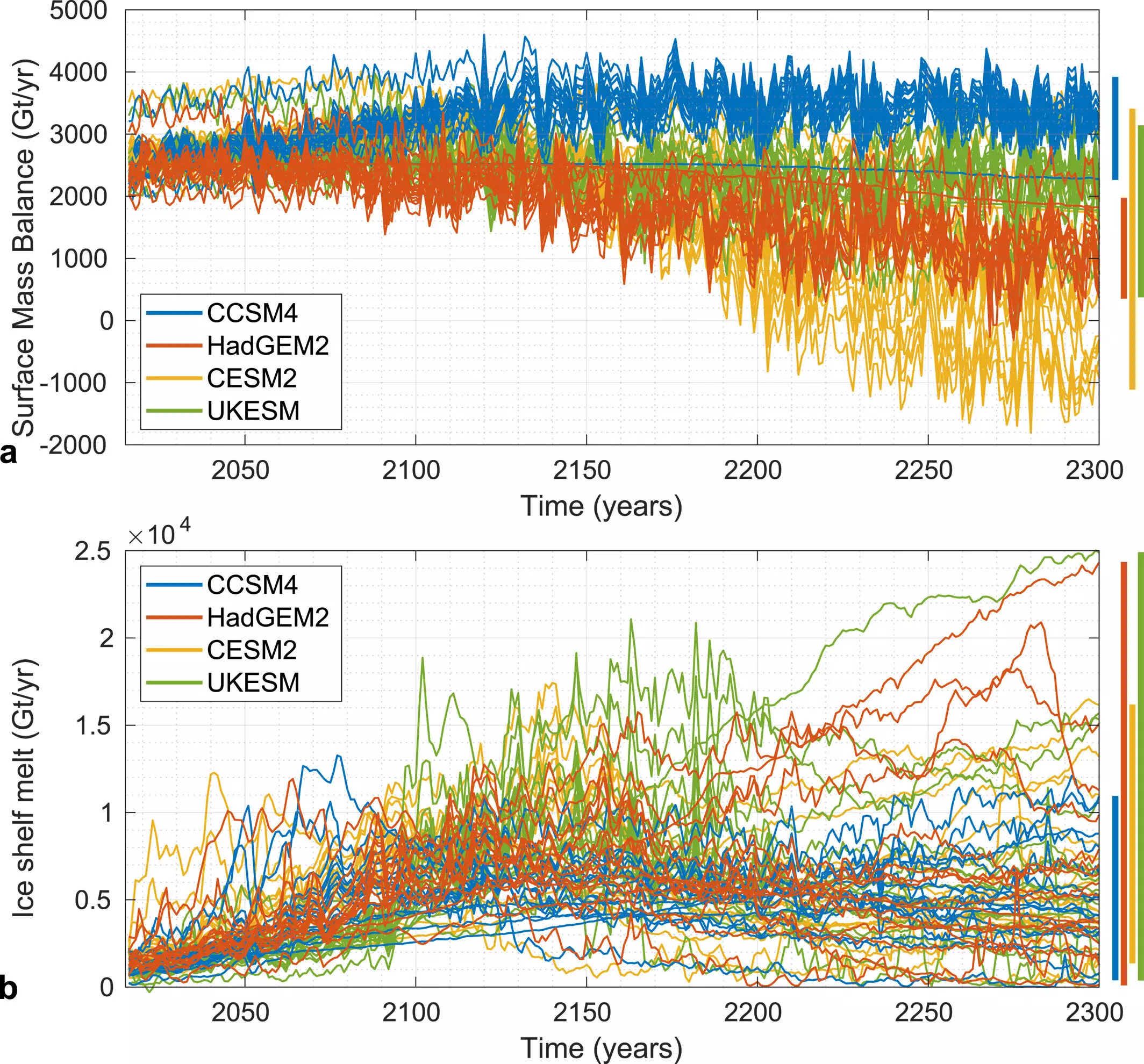In a significant collaborative effort involving over 50 climate scientists worldwide, a groundbreaking study led by researchers from Dartmouth University has illuminated the precarious future of Antarctica’s ice sheet in light of ongoing carbon emissions. Published in the journal Earth’s Future, this research marks an important advance in our understanding of how global emissions can influence one of the planet’s most critical climate indicators: the Antarctic ice sheet. For the first time, a collective analysis of data from 16 different ice-sheet models offers a clearer forecast of ice loss projected to occur over the next 300 years.
The findings reveal a sobering reality: while the 21st century will see a gradual increase in ice loss due to carbon emissions, projections become alarmingly uncertain after the year 2100. The researchers found consistency in model predictions until this turning point, at which time the forecasts begin to diverge sharply, hinting at more catastrophic scenarios looming on the horizon.
The report indicates that should emissions continue at their current rate, the scenario for Antarctica’s western basins is dire. Most models predict a significant retreat in ice coverage, with projections estimating a rise in global sea levels of up to 5.5 feet by the year 2200. Such an increase poses an existential threat to coastal cities worldwide, raising the stakes for urgent policy action to curb emissions. Hélène Seroussi, the study’s lead author, aptly points out a troubling trend among policymakers: the conversation about sea-level rise tends to focus predominantly on the next few decades, with very few considering long-term impacts beyond 2100.
The study’s contribution to the literature is crucial, as it provides vital projections that have been largely absent in climate discussions. Seroussi states, “The results show that beyond 2100, the long-term impact for the regions most susceptible to sea-level rise becomes amplified.” This amplification underscores the interconnectedness of carbon emissions and sea-level rise, urging a reevaluation of existing climate strategies.
The Need for a Paradigm Shift in Emission Reduction Strategies
One key aspect of the research is the stark difference in outcomes between high- and low-emission scenarios, particularly regarding their influence on sea-level rise post-2100. Mathieu Morlighem, a co-author and Dartmouth professor, emphasizes that while the effects of current emissions may seem initially modest, the gap between emissions scenarios widens dramatically after this critical juncture. “These results confirm that it is critical to cut carbon emissions now to protect future generations,” Morlighem argues.
This finding reinforces the necessity for immediate policy action and public awareness regarding sustainable practices. As the models collectively agree that once large-scale ice loss begins, it becomes an irreversible process, the urgency grows for stakeholders to take decisive steps now, rather than waiting for more data or clearer timelines.
The study also highlights the potential for future collaborative modeling efforts. The disparities among the various models can pose significant challenges, yet they also create opportunities for focused research to resolve uncertainties. Seroussi notes the importance of learning from scientific communities worldwide, suggesting a collective pathway toward better understanding of ice sheet dynamics, not only for Antarctica but also for other regions like Greenland, which face similar risks.
As these researchers seek to refine their models and examine the predictions that appear most probable, the overarching theme remains clear: the actions we take today regarding carbon emissions will have profound implications for future generations. The discussions initiated by this study could lay the groundwork for transformative approaches to policy-making and climate action, as the stakes for human habitation on coastal land continue to rise.
Understanding the long-term implications of carbon emissions on Antarctica’s fragile ice sheet is not merely an academic exercise but a pressing necessity. Such research is essential to safeguard our planet and create sustainable pathways that ensure the stability of global sea levels and, ultimately, the survival of countless communities worldwide.


Leave a Reply